NIRF, Ministry of Education: Aspiring medical students in India are eagerly waiting for NEET UG 2025 results. Apart from NEET exam preparation, what interests students and parents is the quality of medical colleges they aim for. Choosing the right college is more than just cut-offs and fees, it’s about academic excellence, infrastructure, research, and career prospects. Thus, the NIRF (National Institutional Ranking Framework) rankings play a crucial role.
In this article, we have explained in detail the NIRF ranking methodology for MBBS colleges, the parameters used, and how NEET UG 2025 aspirants can use this data to make informed decisions about their future.
What is NIRF?
The National Institutional Ranking Framework (NIRF) was launched by the Ministry of Education, Government of India, in 2015.
- It provides an objective ranking of Indian higher education institutions across various domains—Engineering, Medical, Law, Management, and overall performance.
- Each year, NIRF releases rankings based on a fixed set of criteria.
- For medical institutions (including MBBS colleges), these rankings serve as official quality indicators used by students and parents.
Why NIRF Rankings Matter for NEET Aspirants
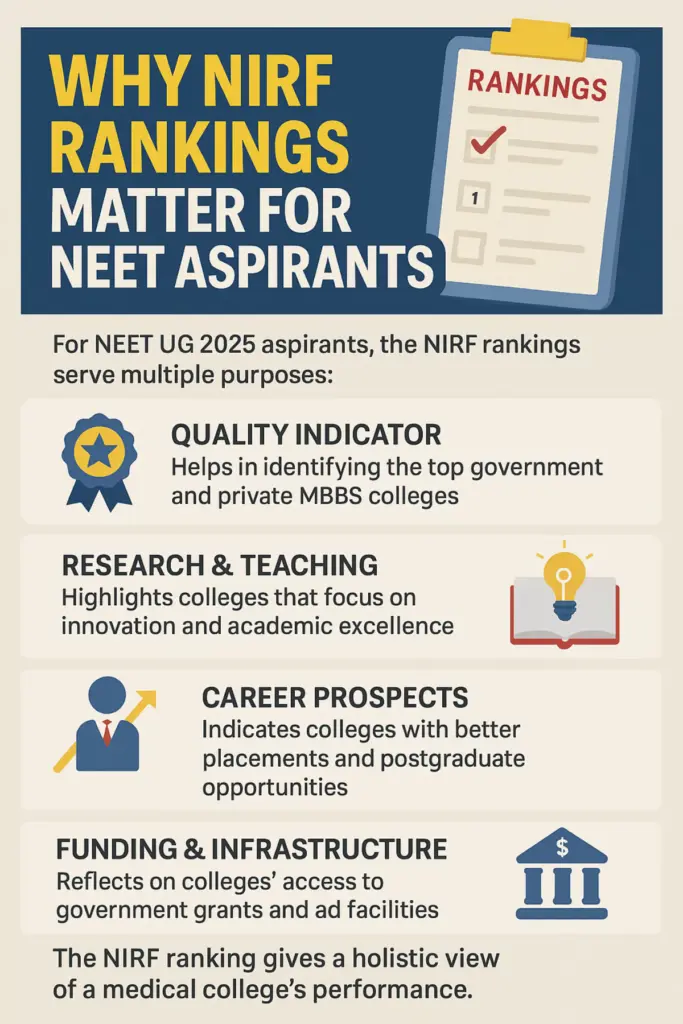
For NEET UG 2025 aspirants, the NIRF rankings serve multiple purposes:
- Quality Indicator: Helps in identifying the top government and private MBBS colleges.
- Research & Teaching: Highlights colleges that focus on innovation and academic excellence.
- Career Prospects: Indicates colleges with better placements and postgraduate opportunities.
- Funding & Infrastructure: Reflects on colleges’ access to government grants and facilities.
- The NIRF ranking gives a holistic view of a medical college’s performance.
NIRF Ranking Parameters for Medical Colleges
NIRF evaluates medical colleges based on five broad parameters, each with sub-parameters:
| Parameter | Weightage |
| Teaching, Learning & Resources (TLR) | 30% |
| Research and Professional Practice (RP) | 30% |
| Graduation Outcomes (GO) | 20% |
| Outreach and Inclusivity (OI) | 10% |
| Perception (PR) | 10% |
NIRF Parameter for Ranking MBBS Colleges
1. NIRF- Teaching, Learning & Resources (TLR)
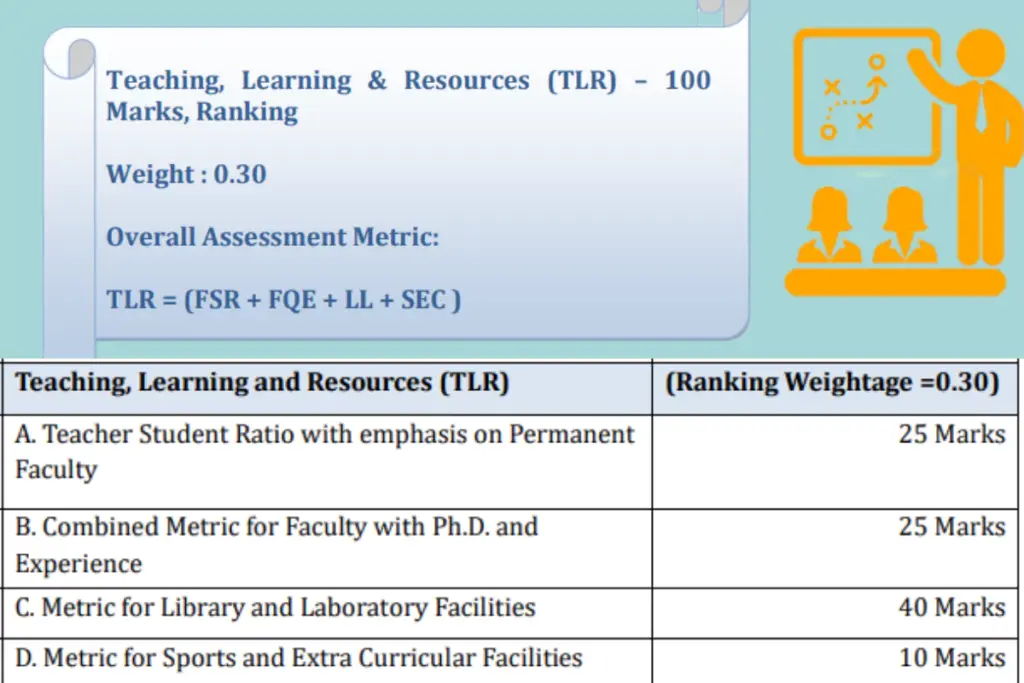
- Student Strength including Doctoral Students (SS)
Measures the total number of students enrolled, including MBBS, PG, and PhD students. - Faculty-Student Ratio with Emphasis on Permanent Faculty (FSR)
Evaluates teaching quality based on the number of permanent faculty per student. - Combined Metric for Faculty with PhD (or equivalent) and Experience (FQE)
Captures both academic qualifications (PhD/MD/MS) and professional teaching experience. - Financial Resources and their Utilisation (FRU)
Tracks how efficiently the institution uses funds for academics, salaries, research, etc. - Online Education (OE)
Measures the presence of digital classrooms, LMS systems, recorded lectures, and e-learning modules. - Multiple Entry/Exit, Indian Knowledge System and Regional Languages (MIR)
Assesses curriculum flexibility, incorporation of regional culture, and language inclusivity.
Institutions with a well-balanced faculty team, modern labs, and a strong academic system score higher.
2. NIRF- Research and Professional Practice (RP)
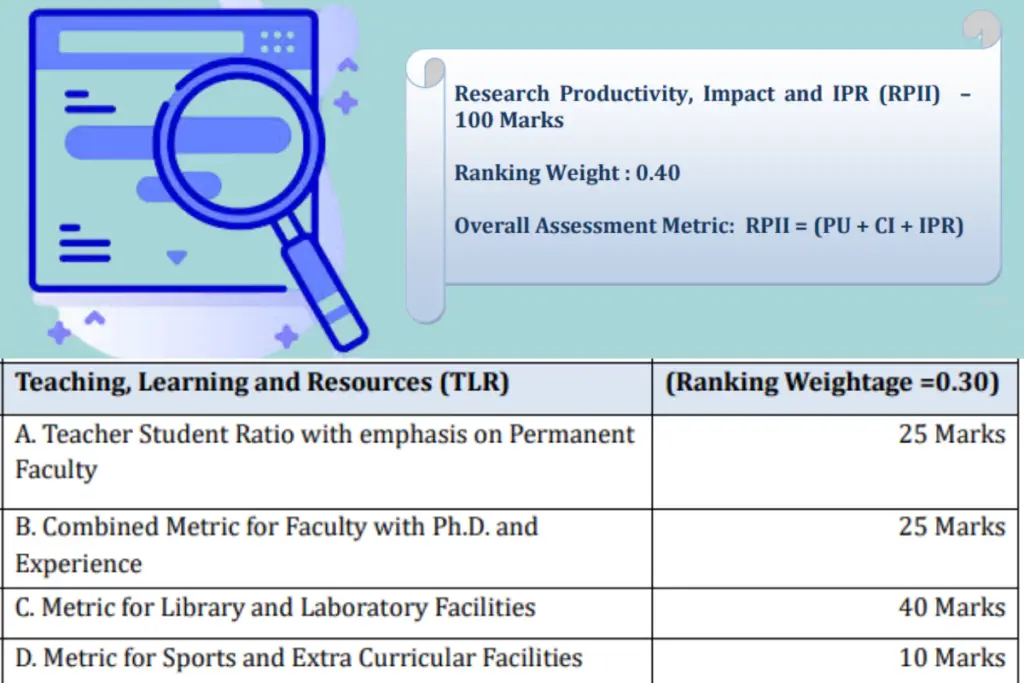
- Combined Metric for Publications (PU)
Look at the number of research papers published in UGC/Scopus/Web of Science journals. - Combined Metric for Quality of Publications (QP)
Assesses the impact factor, citations, and relevance of published research. - IPR and Patents: Published and Granted (IPR)
Measures innovation through intellectual property rights, patents filed and granted. - Footprint of Projects and Professional Practice (FPPP)
Evaluates consultancy projects, funded research, and outreach in medical practice. - Publications & Citations in SDGs (PSDGs)
Assesses alignment of medical research with UN Sustainable Development Goals (SDGs), like healthcare access, diseases, and maternal health.
AIIMS Delhi, for instance, consistently scores high in RP due to its research culture.
3. NIRF- Graduation Outcomes (GO)
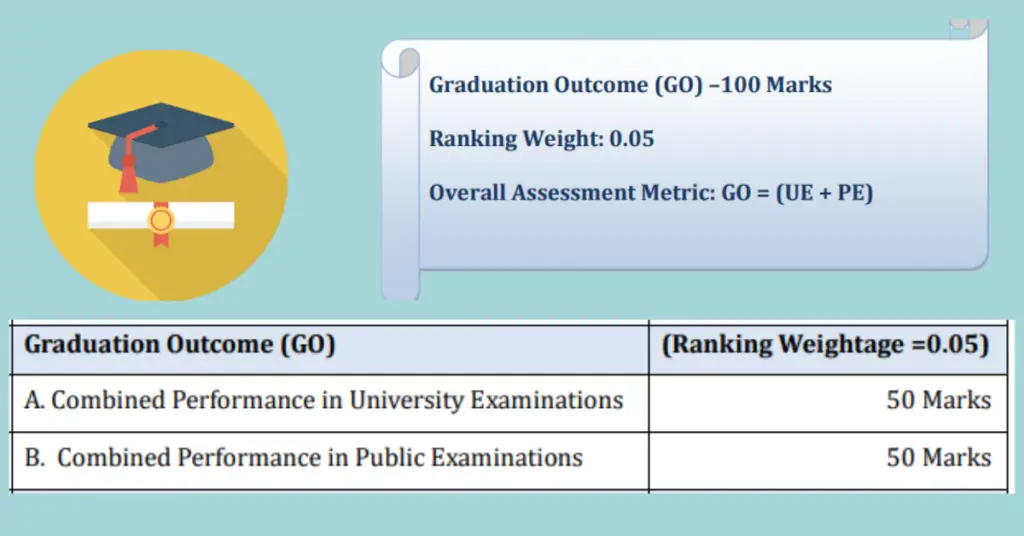
- Metric for University Examinations (GUE)
Measures the pass percentage of MBBS and PG medical students in final exams. - Metric for Number of Ph.D. Students Graduated (GPHD)
Assesses institutional capability in producing research scholars (PhDs/DMs/MCHs).
This measures the success rate of students after completing MBBS. Sub-indicators also include:
- Students qualifying for PG entrance exams like NEET-PG
- Placement statistics
- Number of students pursuing higher education
- Median salary of graduates (in some cases)
It shows how well a college prepares students for real-world medical practice.
4. NIRF- Outreach and Inclusivity (OI)
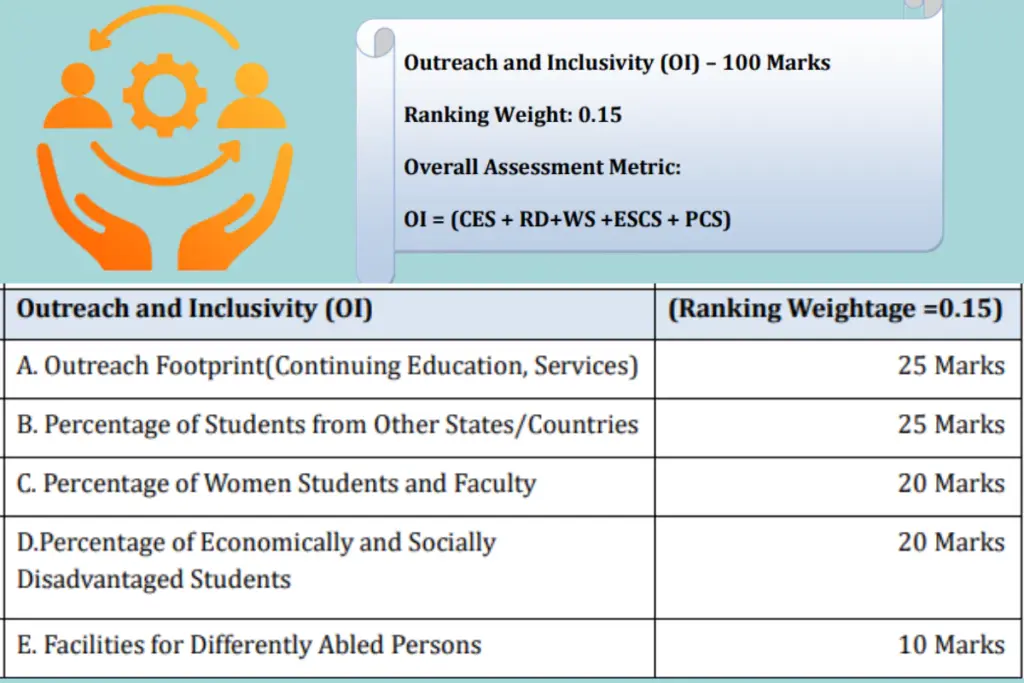
- Percentage of Students from Other States/Countries (Regional Diversity – RD)
Higher scores for a diverse student body from different Indian states and abroad. - Percentage of Women (Women Diversity – WD)
Promotes gender diversity and inclusion in medical education. - Economically and Socially Challenged Students (ESCS)
Evaluates the percentage of SC/ST/OBC/EWS students and scholarship opportunities provided. - Facilities for Physically Challenged Students (PCS)
Measures infrastructure support like ramps, lifts, sign language interpreters, and learning aids for differently-abled students.
Colleges promoting diversity and inclusion get higher OI scores.
5. NIRF- Peer Perception (PR)
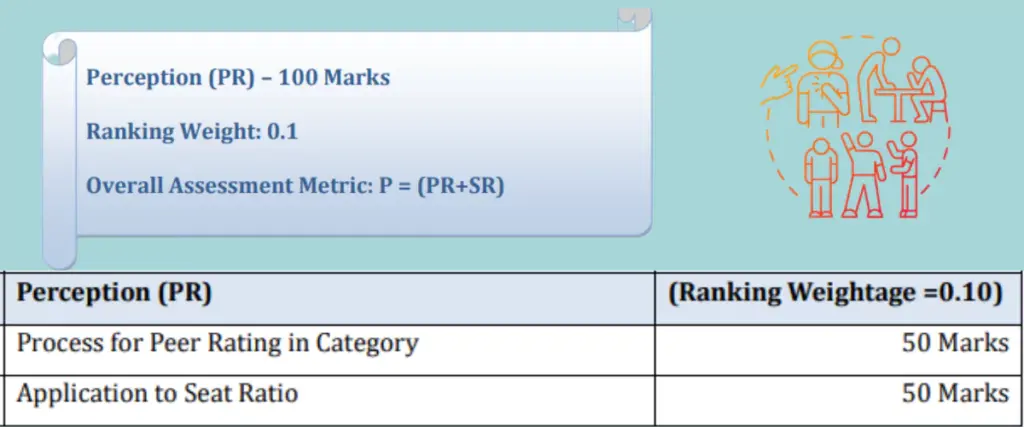
- Perception Ranking (PR)
Reflects brand value and public perception of the medical college. - Peer Perception: Academic Peers and Employers
Captures how faculty from other colleges, alumni, and recruiters rate the institution.
Perception is based on feedback from:
- Employers and recruiters
- Academic peers
- Public (via surveys)
Though somewhat subjective, this helps gauge the prestige and popularity of a college in the medical community.
Methodology of Data Collection and Weightage
NIRF relies on a combination of self-reported data from institutions and independent sources like:
- Scopus and Web of Science for publication data
- Government databases for enrollment and faculty statistics
- Surveys for perception
Each sub-parameter is assigned a quantitative value and normalised on a scale of 0 to 100. The final score is derived using the weighted average of all parameters.
Example:
- A college with strong faculty and high research output may still fall behind if it lacks inclusivity or perception.
- A private college with good infrastructure but weak research output may score lower despite having modern facilities.
How to Use NIRF Rankings During MBBS Admissions
Here’s how NEET UG 2025 aspirants can utilise NIRF rankings:
- Shortlist Colleges: Use rankings to create a preference list beyond just state cut-offs.
- Compare Colleges: Evaluate two colleges based on specific NIRF parameters that matter to you (e.g., research vs. infrastructure).
- Identify Emerging Institutions: Spot new private or government colleges performing well in recent years.
- Backup Plans: Pick lesser-known but well-ranked colleges as safe options if top-tier colleges are out of reach.
Top MBBS Colleges in India According to NIRF 2024
Here are the Top 10 Medical Colleges in India based on NIRF 2024 rankings:
| Rank | College Name | City | State | Score |
| 1 | All India Institute of Medical Sciences (AIIMS), Delhi | New Delhi | Delhi | 94.46 |
| 2 | Post Graduate Institute of Medical Education and Research (PGIMER) | Chandigarh | Chandigarh | 80.83 |
| 3 | Christian Medical College (CMC) | Vellore | Tamil Nadu | 75.11 |
| 4 | National Institute of Mental Health and Neuro Sciences (NIMHANS) | Bengaluru | Karnataka | 71.92 |
| 5 | Jawaharlal Institute of Post Graduate Medical Education and Research (JIPMER) | Puducherry | Pondicherry | 70.74 |
| 6 | Sanjay Gandhi Postgraduate Institute of Medical Sciences | Lucknow | Uttar Pradesh | 70.07 |
| 7 | Banaras Hindu University (BHU) | Varanasi | Uttar Pradesh | 69.54 |
| 8 | Amrita Vishwa Vidyapeetham | Coimbatore | Tamil Nadu | 68.81 |
| 9 | Kasturba Medical College | Manipal | Karnataka | 67.42 |
| 10 | Madras Medical College and Government General Hospital | Chennai | Tamil Nadu | 64.12 |
Common Misconceptions About NIRF
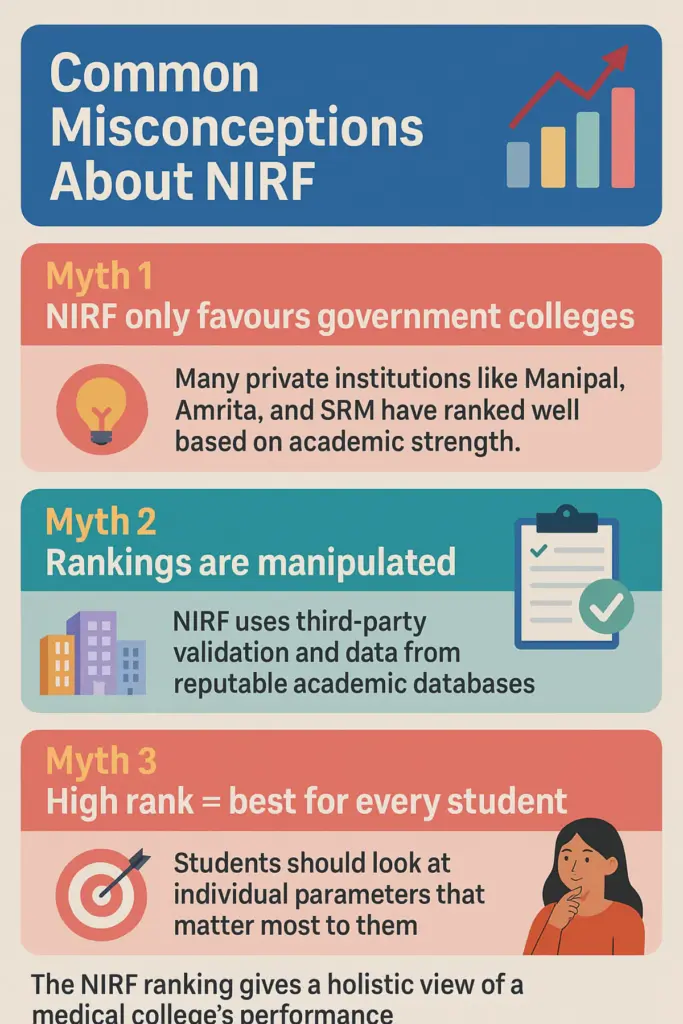
Expert Advice for NEET UG 2025 Candidates
- Use NIRF as your guiding light, not your only source.
- Combine NIRF rankings with NEET 2025 cut-off trends, fee structures, and state domicile benefits.
- Evaluate whether you prioritise research, PG prospects, location, or diversity.
- For those aiming at top AIIMS, PGIMER, or JIPMER, track improvements in NIRF scores year over year.
The NIRF rankings offer a transparent, data-backed perspective on the quality of MBBS colleges in India. For NEET UG 2025 aspirants, understanding how these rankings are calculated can be the difference between just getting admission and getting into a truly transformative institution.
Don’t just chase marks—chase quality. Let the NIRF guide your journey from NEET preparation to choosing the right medical college.

